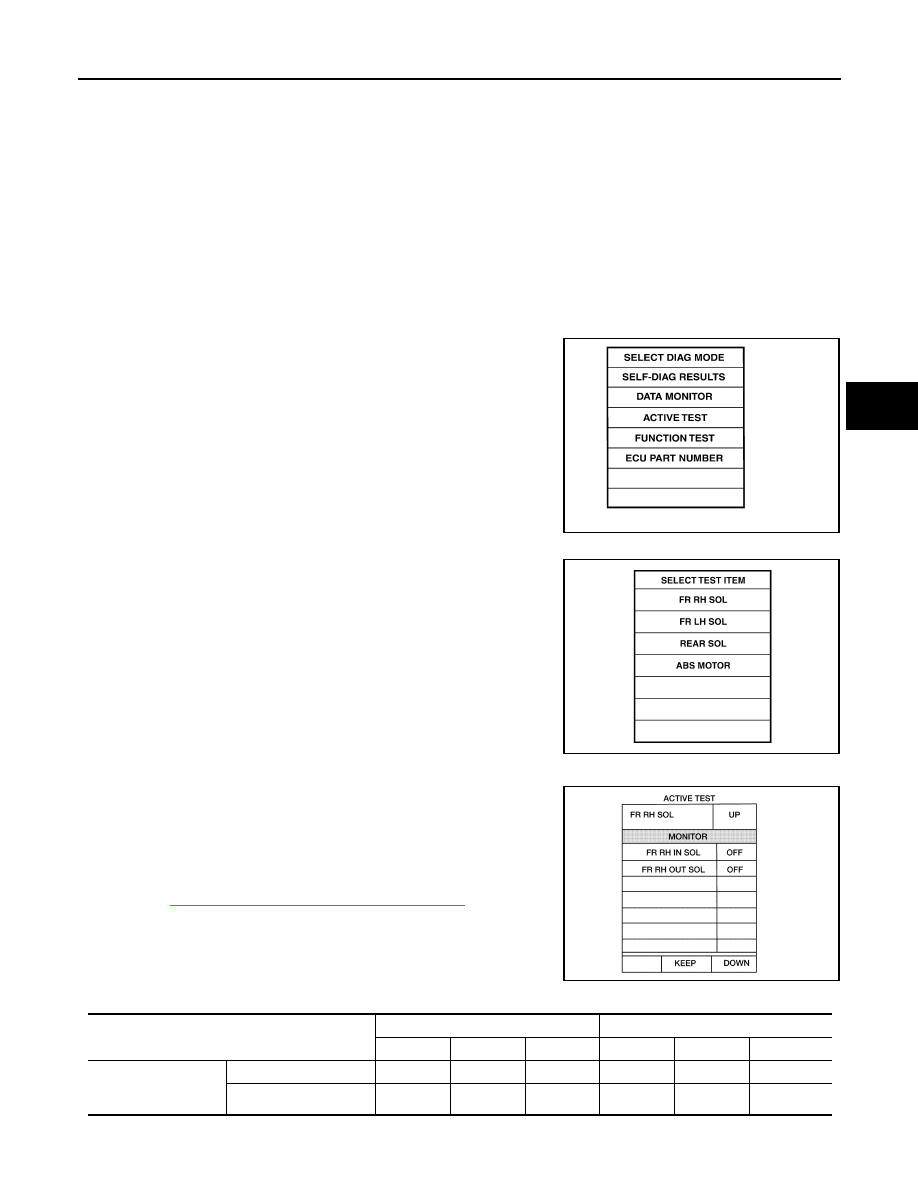Nissan Frontier D22. Manual - part 175

TROUBLE DIAGNOSIS
BRC-31
[ABS]
C
D
E
G
H
I
J
K
L
M
A
B
BRC
–:Not applicable
ACTIVE TEST
Operation Procedure
CAUTION:
●
Do not perform active test while driving the vehicle.
●
Make sure to completely bleed air from brake system.
●
Active test cannot be performed when ABS warning lamp is on.
1.
Connect the CONSULT-II connector to the data link connector and start the engine.
CAUTION:
If CONSULT-II is used with no connection of CONSULT-II CONVERTER, malfunctions might be
detected in self-diagnosis depending on control unit which carry out CAN communication.
2.
Touch
″START″ on the display.
3.
Touch
″ABS″ and ″ACTIVE TEST″.
4.
Test item selection screen is displayed.
5.
Touch necessary test item.
6.
Touch
″START″.
7.
Carry out the active test by touching screen key.
Solenoid Valve
1.
To perform active test of ABS functions, select major items for
each test item.
2.
For ABS solenoid valve, touch “UP”, “KEEP” and “DOWN”. For
ABS solenoid valve (ACT), touch “UP,” “ACTUATOR UP” and
“ACTUATOR KEEP”. Use screen monitor to check that solenoid
valve operates as shown in Solenoid Valve Operation Chart.
Refer to
BRC-88, "Solenoid Valve Operation Chart"
.
Solenoid Valve Operation Chart
WFIA0043E
LBR379
LFIA0180E
Operation
ABS solenoid valve
ABS solenoid valve (ACT)
UP
KEEP
DOWN
UP
ACT UP
ACT KEEP
FR RH SOL
FR RH ABS SOLE-
NOID (ACT)
FR RH IN SOL
OFF
ON
ON
OFF
OFF
OFF
FR RH OUT SOL
OFF
OFF
ON*
OFF
OFF
OFF